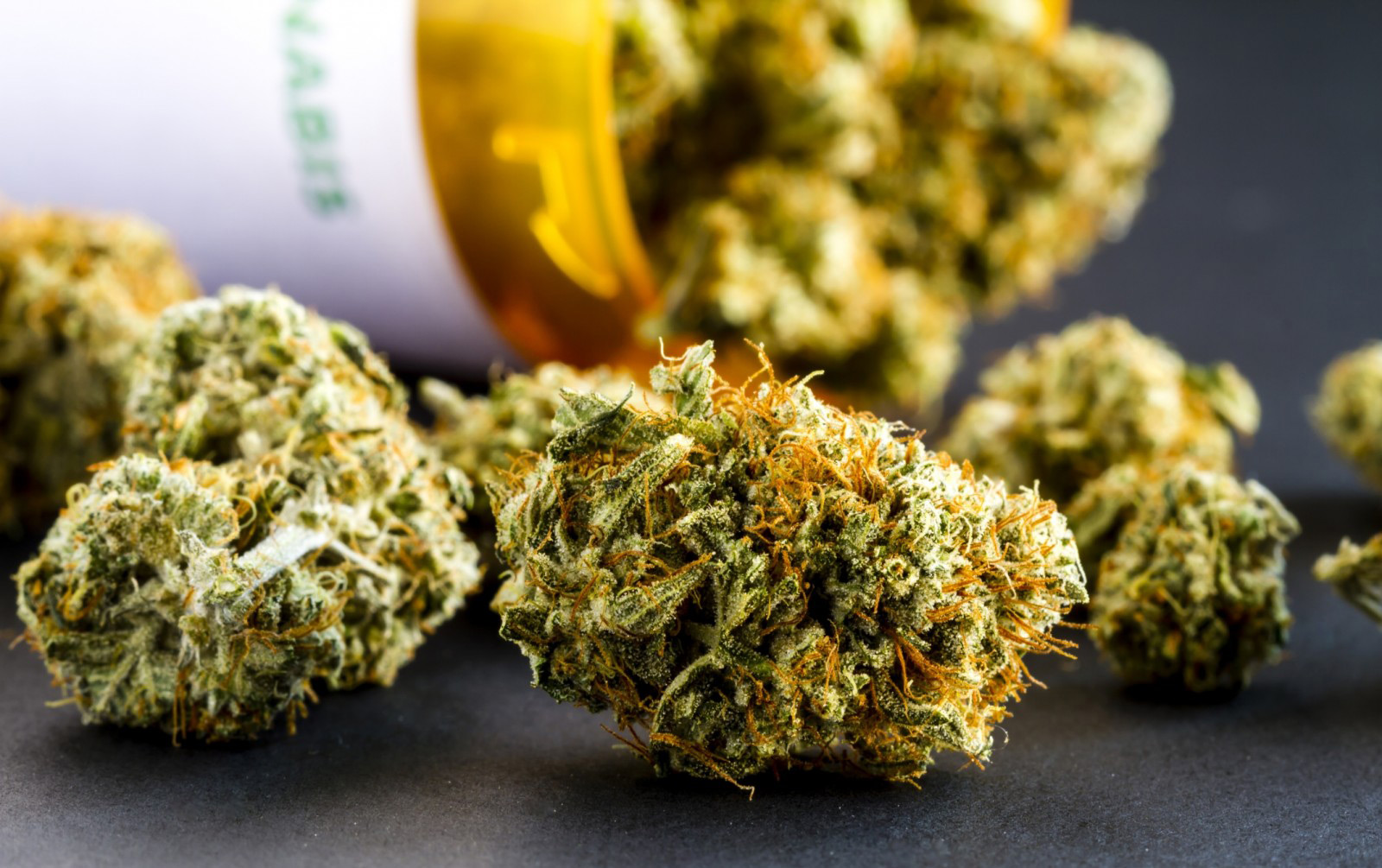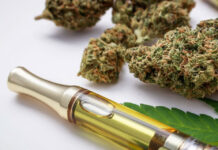Decades of youth abstinence pledges have stifled generations of Americans’ ability to think critically about their own health.
Red Ribbon Week, the largest drug-use prevention campaign in the United States, finds itself egregiously out of touch this year.
Founded in 1985 by the Drug Enforcement Agency (DEA) and powered by the National Family Partnership (NFP), the annual campaign encourages students to commit to a lifetime of abstinence by remaining drug free.
Over the past three decades, schools have embraced Red Ribbon Week as an opportunity to build a sense of community between schools, young people and their families through a shared dedication to resist drug use.
In typical years, students and teachers decorate their classroom doors and wrap double-looped red bows around the columns of the building or the trees of the school grounds to gain maximum visibility. Schools distribute small red ribbon pins to each student to wear throughout the week to signify their commitment to abstinence, and furthermore, to their community.
Due to the outbreak of COVID-19, this year’s Red Ribbon Week campaign hosted virtual activities and contests, inviting young people and their families to decorate their home front door, mailbox or fence with a red ribbon and this year’s theme: “Be Happy. Be. Brave. Be Drug Free.”
There’s something to be said about this insistent, annual, idealistic goal of total abstinence among all people at all times: it has yet to happen.
In fact, half of young people report trying a drug, including alcohol, by the 12th grade.
Still, the myth of the success of abstinence pledges persist despite glaring contradictions otherwise.
Here’s the reality of drug use in the United States. This year:
CDC data indicate that the COVID-19 pandemic is exacerbating the overdose crisis in the United States. Preliminary data reported for February and March 2020 show an increase in overdose deaths by 5,000 compared to the same months in 2019.
We’re mostly spending our days in our own homes, physically divided from the people we have built a sense of community and shared responsibility. Reported self-medicating and addiction relapse are steeply increasing.
The data beg that we ask the question:
What happens when kids, or the adults they grow up to be, ‘don’t just say no’ and don’t just do as they were told?
It’s a serious question.
Earlier this month, President Donald Trump fallaciously stated about COVID-19:
“You catch it, you get better, and you’re immune.”
Inaccurate claims like these can only be extolled under the assumption that voters are more ignorant than informed, and more committed to group-think than intellectual, scientific and human integrity.
The COVID-19 pandemic reveals the abysmal and embarrassing lack of quality health education and health literacy in the U.S., including the overextension of the conviction that we can shame people into good health by indoctrinating them with our sense of morality and health beliefs.
Feelings of invincibility, indignation, stigma, shame or fear cannot be the driving force behind a person’s health decisions, like wearing a mask or a condom, or getting tested and treated for sexually transmitted infections or COVID-19.
Science-based information and skills are far more effective alternatives, but in their absence and without the ability to critically evaluate information, a person falls back on what little health information they learned in their primary education — which is typically not much of any substance at all.
Beyond our gap in comprehensive health education, the pandemic reveals the limitations of all-or-nothing, black and white thinking of abstinence-based messaging and the course of action it implies: just don’t do a thing. But we can’t always avoid a thing, like in the case of COVID-19, breathing.
We are currently living through circumstances where we share a hyper focus on discovering ways to reduce our risk of exposure and transmission of communicable diseases — yet this should always be the case.
Reducing risk and seeking ways to reduce harm should always be the standard for personal and public healthcare. This is not a fringe option, rather, the best option.
The COVID-19 pandemic — and 2020 at large — broadcasts inevitabilities long embraced by harm reductionists: people are flawed, unique and diverse, and follow their own edicts.
Harm reduction recognizes that we all navigate our own individual circumstances, yet, we each have a right and responsibility to do what is best to reduce our personal risk of harm.
It is not through judgment and stigma that we will be able to alleviate the suffering caused by substance misuse or disease transmission. Rather, it is through meeting the basic human right to the provision of accurate, science-based information and skills that will help them make the best choices for themselves.
And the principles of harm reduction hold true to that ethos regardless of the health concern or anyone’s feelings about them. Despite some lingering resistance, the impact of the individual on community health is clearer than ever to the American public, and, similarly, the need to empower and equip the individual with adequate information, skills and resources to make their own decisions is paramount.
The political infiltration of ‘health morality’, we’ll call it, creates barriers to the delivery of effective, evidence-based health education and services. This can be seen by the mass acceptance of comprehensive sex education, which took decades of public health advocacy sparked by the global AIDS pandemic. This is in contrast to still widely-accepted abstinence-based drug education models, bolstered by the War on Drugs and the legacy ‘Just Say No’ Reagan-era politics.
With Americans experiencing both an overdose epidemic and a viral respiratory pandemic that exacerbates it, it is critical that we rethink the delivery of health information in schools.
Increasing numbers of K-12 health educators are recognizing the remnants of decades of exclusionary and fear-based approaches to health education and its impact on young people and their families.
That recognition is one of the reasons why Safety First: Real Drug Education for Teens, the harm reduction-based drug education curriculum developed by the Drug Policy Alliance, has been an urgent and compelling resource in the midst of the pandemic.
San Francisco-based Biology and Health educator, Thomas Fulwiler, agrees: “It is an approach without judgement and I feel that I cannot judge anyone for the choices they make, as an educator I can only provide information that will allow my students to make their own choices and provide them with information that may keep them safer.”
The COVID-19 pandemic has opened empathy and space for individuals to admit where we need help and revealed, en masse, the potential of harm to many Americans caused by health crises — including infection and transmission, fluctuations in mental health, and financial instability of many households.
These intricacies between public policy, public health, and the inherent sovereignty of individuals to make their own decisions — though not without similarly intricate consequences — have always been embraced within Safety First and uplifted by harm reductionists.
I have these questions for Red Ribbon Week and other abstinence campaigners:
- What happens when things change? When kids grow up? When a pandemic hits, and advances in information and technology transform the tools that we use to communicate, work and keep ourselves safe?
- What is our message to young people who today may be using drugs to self-medicate through this moment of shared collective trauma?
- What is the guidance for young people who will inevitably engage in legal, healthy and managed substance use into their adulthood?
- How do we reconcile drug-free messaging with the fact that the very parents and teachers who serve as the messengers may not be drug free?
- How can adults be considered a safe source of information when the school community has denigrated the profile of drug users, which may include parents, teachers and the students themselves?
- How can we be considered trustworthy sources of information when teens inevitably grow to realize that not all drug use leads to abuse?
- Most importantly, how can we accept the failing of abstinence-based messaging and adopt approaches that empower communities, save lives, and will beat this nation’s overdose crisis?
The intentions of Red Ribbon Week aren’t dubious. It’s not difficult to believe that generations of parents and teachers have been well-meaning in this effort. But the likelihood that any community will be drug-free, especially in the midst of a collective pandemic, is statistically nil.
It is a smokescreen for children that never holds up.
The attempt to guide young people’s health choices through strong campaigning and repeated messaging, only, is to prime them for manipulation surrounding their health rights, best practices for taking care of themselves and their community, and the politics that surround these. It’s time for a different approach.











